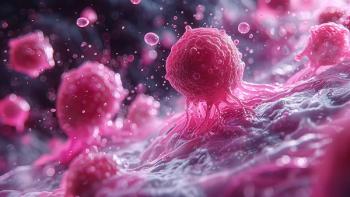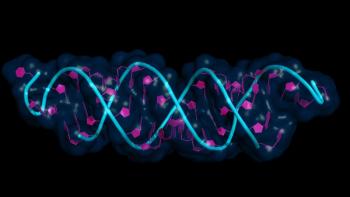
- BioPharm International-02-01-2009
- Volume 22
- Issue 2
Versatility of a Single-Use Bioreactor Platform for Culture of Diverse Cell Types
Are disposable bioreactors effective for cell culture?
ABSTRACT
Using one unified single-use cell culture platform for facilities that require culture of different types of cells can significantly reduce equipment costs, the risk of cross-contamination, and the requirement for training, cleaning, sterilization, and validation. Here, a bioreactor platform consisting of a presterilized, flexible, disposable plastic bag on a rocking platform and filled with media and a gas mixture is shown to support the growth of E. coli, Chinese hamster ovary (CHO) cells, and hybridoma cells as measured by the daily cell density, nutrient consumption, and production of metabolites.
Single-use disposable components offer many advantages in biologics manufacturing, and they collectively provide a platform to culture diverse cell types in a facility. This is particularly important for multi-use contract manufacturing facilities such as PacificGMP that service the needs of diverse clientele.
Disposable components include bioprocess bags, tubing, capsule filters, tangential flow capsules, bioreactors, chromatography capsules, and mixing systems. They are supplied clean and ready to use, which obviates the need for sterilization and decreases the requirement for services such as water for injection (WFI) water systems, and steam generators. Disposable components are not used for subsequent operations, eliminating the chance of cross contamination between process runs. Because the need for stainless-steel equipment is reduced or eliminated, long lead times for equipment installation can be avoided. Single-use ystems are less complex, reducing engineering requirements. There is no need for clean-in-place (CIP) or steam-in-place (SIP) operations, or any of the associated piping, valves, controls, or pressure rating of vessels. Moreover, the use of disposable components reduces the complexity of validation. Because there are fewer reusable components, fewer items need to be tracked, and extensive validation studies for sterilization and cleaning can be eliminated. Finally, by removing the limitations of hard piping and stationary tanks, disposable components allow for operations to be more rapidly reconfigured for a new process run.
There are several options for disposable, scalable bioprocess bags for completing upstream processing steps. The design of a cell culture system will affect the shear forces experienced by cells as well as the mass transfer of gases, and different types of cells will have different sensitivities to these parameters. Generally, mammalian cells are more sensitive to shear forces than bacteria, but bacteria are more sensitive to oxygen limitation. The following studies demonstrate that the Wave Bioreactor (GE Healthcare Chalfont St. Giles, UK) effectively supports the growth and productivity of different types of cells, and the versatility of the platform is further demonstrated by the flexibility of feed strategies and scalability of the systems.
BIOREACTOR SET UP
Each bioreactor consists of a presterilized, flexible, disposable, plastic Cellbag that is placed on a rocking platform and filled with up to half of the bag volume with media. The bioreactors used in these studies were the System20/50EH, System200, and System1000 (GE Healthcare) with maximum culture volumes of 25, 100, and 500 L of media, respectively. The following naming convention will be used to identify the culture set up: the volume of media in a Cellbag of a certain volume, e.g., 100/200 L indicates 100 L of media in the System200 bioreactor.
The remaining volume of the Cellbag is inflated with a process gas mixture, composed of carbon dioxide (CO2) and oxygen (O2), which is mixed with air in a controlled manner. These gases are added using a sterile inlet filter that is pre-attached to the bag. Continuous airflow provides oxygenation and gas exchange for pH control and CO2 removal. Exhaust air passes through another sterile filter and a backpressure control valve. The backpressure control valve ensures that the Cellbag is always fully inflated at any airflow and prevents overinflation.
Liquid mixing and mass transfer of gases are achieved by rocking the Cellbag back and forth at a user-determined rocking angle and frequency. The waves generated by the rocking motion greatly increase surface area to enhance gas transfer. The wave motion also promotes bulk mixing and off-bottom suspension of cells and particles without any damage to the cells. Temperature is controlled by a heater located in the base plate of the unit that warms the underside of the bag. The heater is regulated by a noninvasive temperature sensor that is also in the base plate of the unit.
Additional ports allow sterile additions and sample withdrawal without the need to place the bioreactor inside a laminar flow cabinet. A sterile tubing welder is used to attach media, buffer, and glucose stock solutions to the system.
A hemacytometer was used for cell counts, and viability was established by trypan blue dye exclusion. Optical density (OD600) was measured with a spectrophotometer (Bio-Rad SmartSpec 3000). Cell culture biochemistry analysis was conducted on a Bioprofile 300A and 400 (Nova Biomedical, Waltham, MA). The pH was determined online using the Cellbag probe and offline using a PHM220 pH meter (Meter Lab, Lyon, France). Oxygen, CO2, temperature, rocker speed, and angle were determined and controlled through the Wave Bioreactor controllers.
GROWTH AND PRODUCTIVITY
E. coli
The 20/50-L bioreactor was seeded from an overnight E. coli culture in 20 L of Terrific Broth with additives. The culture was maintained for 10 hours at 40–45 rocks per minute (rpm) and a rocking angle of 11.9–12.0°. A foam trap was attached in place of the outlet filter to avoid clogging from the high rpm and angle used for bacterial fermentation.
The starting OD600 was 0.2, and a maximum OD600 of 19.8 was reached after 9.5 hours (Figure 1) versus shake flasks cultures with maximum OD600 of 2.0 after overnight culture. This strong growth was supported by maintaining the dissolved oxygen at >75% (Figure 2). Initial glutamine and glutamate concentrations were approximately 6 and 8 mM, respectively, and were reduced to 4 and 3 mM (Figure 3). Variability (2–10 g/L) in the glucose concentration indicates spiking of the media followed by consumption. Even with the rapid growth of the bacteria, pH was maintained at an average of 6.75.
Figure 1
Therefore, by using the Wave platform, an improvement in bacterial growth compared to shake flask culture of almost 10-fold was achieved without any optimization of growth media or feeds.
Figure 2
Hybridoma
Wave bioreactors were seeded at a cell density of 1–2x106 cells/mL in HyQ ADCF-MAb media (HyClone, Logan, UT). The 25/50-L bioreactor ran at 22.5–24.4 rpm and an angle of 8.0°. The 100/200-L bioreactor ran at 20.1–21.1 rpm and 8.0° angle. The level of CO2 was adjusted to maintain the pH of the cultures at 6.9–7.1. The 25/50-L run required 6% CO2 with the exception of the last day at 4% CO2, whereas the 100/200-L run occurred in the presence of 7–8% CO2. Additional O2 was added to the 100/200-L run on the fourth day after perfusion was initiated.
Figure 3
Perfusion was initiated one day after the bioreactors were at full capacity. In perfusion mode, feed solutions were fed to the bioreactor continuously, and spent media was constantly removed. Running a process in perfusion mode compared to in batch or fed-batch mode can increase the longevity and cell density of the culture, which in turn increases the overall productivity of the run. The perfusion rate (percent total culture volume per day) started at 5–12% and increased to >50% by the second or third day of perfusion. The maximum cell density in the 25/50-L and 100/200-L bioreactor was approximately 9x106 and 5x106 cells/mL, respectively (Figure 4). These cell densities occurred 14 and 6 days after seeding and corresponded with a cell viability of 65–77%.
Figure 4
The concentration of glucose was generally 3.0–3.5 g/L. The use of perfusion kept the glucose metabolism product, lactate, relatively low compared to cultures in shaker flasks. The maximum lactate for the 25/50-L and 100/200-L bioreactor was 1.15 and 1.25, respectively. The level of glutamine in the 25/50-L bioreactor was maintained between approximately 1–2 mM until day 13 of culture, and the product from glutamine metabolism, ammonium, was generally 3–4 mM (Figure 5). Ammonia production in the 100/200-L bioreactor was similar, but the glutamine was initially above 2 mM and fell to below 1 mM by day five of culture.
Figure 5
Perfusate was collected for 11 and five days from the 25/50-L and 100/200-L bioreactors, respectively. The total collected media volume of 151 L from the 25/50-L bioreactor contained an average IgG concentration of 117 mg/L. From the 100/200-L bioreactor, 320 L of media that was collected yielded an average IgG concentration of 73 mg/L, which correlates to the reduced viable cell density in this bioreactor compared to the 25/50-L.
The controlled addition of nutrients and resultant lower levels of metabolites allowed for maximum product concentrations of up to 124 mg/L. This is an improvement of approximately 80% compared to shake flask cultures, which typically reached a maximum of 22 mg/L.
Chinese hamster ovary
Suspension cells were seeded from spinner flasks into the 25/50-L, 100/200-L, and 500/1,000-L bioreactors at 1x105 –4x105 cells/mL in serum free IS CHO-V (Irvine Scientific, Santa Ana, CA) with additives. Seeding cells at lower densities (e.g., 6x104 cells/mL) is also possible with no deleterious effects on the cell growth or production. In addition, the cells can reach much higher densities inside of the Cellbag than a spinner flask. This can most likely be attributed to the increased oxygenation inside the Cellbag, as well as the ability to control pH. In a spinner flask, the density was maintained between 2x105 –6x105 cells/mL. This was increased to 8x105 –1x106 cells/mL in the Cellbag until perfusion was started, which allows for densities as high as 2x107 cells/mL to be maintained with this cell clone.
The 25/50-L and 100/200-L bioreactors ran at 24 and 20 rpm, respectively, at an angle of 8.0°. The 500/1,000-L bioreactor ran at 6.2 rpm and 2.0° angle. The level of CO2 was adjusted to maintain the pH of the culture at 6.9–7.1. Each run began with a mixture containing 10% CO2, which eventually was reduced to less than 1% CO2 added. Additional O2 was added to each run after perfusion was initiated.
Once the cells reached 1x106–2x106 cells/mL, perfusion was started and the volume exchange per day was approximately 75%. Perfusion was started for 25/50-L on day 13. Perfusion was started for 100/200-L and 500/1,000-L on day 8. The reactor was perfused for as long as cell viability was greater than 50%. Once the cells reached approximately 2x107 cells/mL in the 25/50-L bioreactor run, it became more difficult to control the accumulation of lactate and other toxic subproducts, which in turn rendered pH control very difficult. For the 100/200-L and 500/1,000-L runs, cells were removed to maintain a density of 1x107–2x107 cells/mL and lactate levels of 2.2 g/L or less. The volume exchange per day was increased to approximately 100%.
Figure 6 shows that the cell growth and cell densities for each bioreactor were comparable. The viability and cell growth in the 25/50-L bioreactor dropped precipitously and was not recoverable after the cell density reached 3x107 cells/mL, presumably caused by a lack of nutrients and build up of toxic substances, including high levels of lactate in the culture (Figure 7). Hypoxia was not a likely cause for the decreased viability because dissolved oxygen was maintained at ≥73% for each reactor run.
Figure 6
The glucose and lactate concentrations for each of the runs are similar, with the exception of the glucose spike for 100/200-L on day 9, which resulted from a high concentration added on day 8 (Figure 7). As each bioreactor run progressed and the cell density increased, glucose was consumed and lactate increased. The spikes in glucose concentration in the latter part of each run were caused by additions of 50% glucose stock when the bioreactor glucose level fell below 2.0 g/L.
Figure 7.
The 25/50-L bioreactor perfused for 13 days at an average of 12.5 mg/L of protein harvested, while the 100/200-L bioreactor perfused for 18 days at an average of 8.3 mg/L of protein harvested. This was five days longer than the 25/50-L reactor, which resulted in a gain of 6.7 g of harvested protein over those days. The 500/1,000-L bioreactor perfused for 16 days at an average of 12.2 mg/L of protein harvested, which was three days longer than the 25/50-L bioreactor and which resulted in a gain of 16.4 g of harvested protein over those days. Any increase in the viability and longevity of a bioreactor run resulted in a higher yield. The overall protein produced for each reactor was as follows: 25/50-L – 7.8 g, 100/200-L – 21.4 g, and 500/1,000-L – 149.2 g.
This study demonstrated the scaling of a process from 25- to 500-L in less than five months. The flexibility and ease of use of this single-use disposable platform enabled rapid scale-up without any loss in product quality.
PLATFORM VERSATILITY
A disposable bioreactor offers advantages over reusable bioreactors in the areas of cleaning, sterilization, validation, set-up, and turn-around time between runs. We have demonstrated that these disposable bioreactors can support the growth of bacteria as well as different mammalian cell types. Further, systems run with a 25-, 100-, or 500-L working volume are comparable for cell growth, protein production, glucose consumption, and lactate production.
In conclusion, as the bioprocess industry continues its push to fully implement single-use, disposable systems, it is advantageous for facilities to select the simplest, most cost-effective components.
Kristin DeFife is vice president of operations and Leigh Pierce is president at PacificGMP, San Diego, CA, 858.550.4094,
Articles in this issue
almost 17 years ago
Pittcon 2009 Product Focusalmost 17 years ago
How Change Plays Outalmost 17 years ago
Evaluating Disposable Mixing Systemsalmost 17 years ago
QbD for Analytical Methodsalmost 17 years ago
Upcoming Technologies to Facilitate More Efficient Biologics Manufacturingalmost 17 years ago
Less Venture Capital Means Less Work for CROsalmost 17 years ago
Biotech Drug Prices Under ScrutinyNewsletter
Stay at the forefront of biopharmaceutical innovation—subscribe to BioPharm International for expert insights on drug development, manufacturing, compliance, and more.





